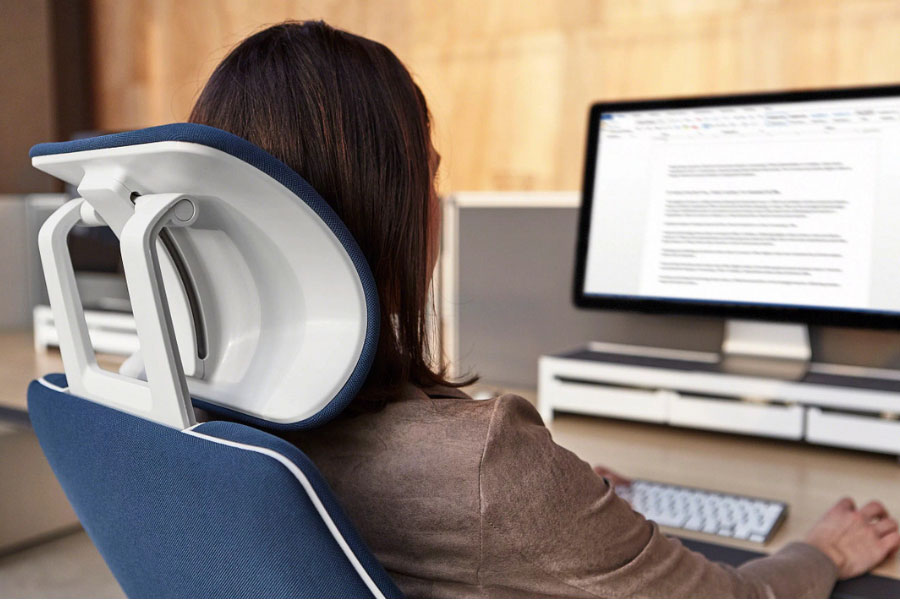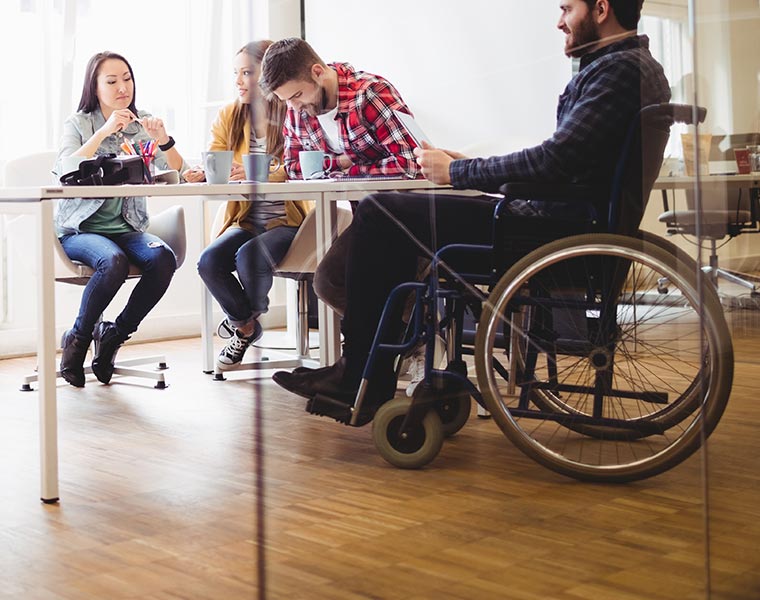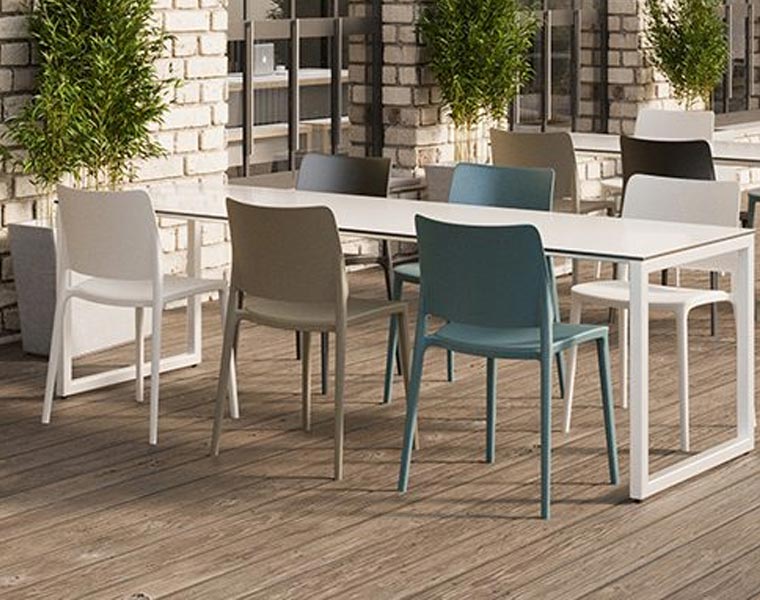When employees spend around 38 hours a week working for you—often a great deal longer, depending on the demands of their roles—you have a responsibility to support their wellbeing as their employer. This includes considerations around their physical health and a huge part of this comes down to how they’re able to move around the workspace and how they use things like furniture and technology.
If you’ve been keeping up with the news lately, you probably won’t have escaped the ‘tech neck’ headlines. Tech neck describes the developing problems people are facing with their bodies as a result of looking down for long stints of time at phones, laptops and other digital devices.
Experts believe that holding the head and neck at a 45-degree angle to look down at devices for extended periods of time adds around 50 pounds of pressure to the neck. In the short term, this causes problems such as:
- Headaches
- Muscle spasms
- Stiff neck and shoulder joints
In the long-term, the causes of tech neck are believed to lead to more serious health problems, including:
- Numbness and tingling as a result of nerve pressure/damage
- Chronic neck and shoulder joint pain
- Musculoskeletal issues involving the spine
- Long-term lower back pain
Ways to prevent or, at least, reduce these problems in the workplace are to provide employees with appropriate furniture and office supplies. This includes things like ergonomic desk chairs and laptop stands so that staff can sit comfortably and have their devices at eye level to reduce neck strain.

Off the screen, out of the seat
In fact, there are a number of measures that can be taken to make sure office fit out and furniture are supporting healthier ways of working. However, what the most effective solution really boils down to is that ultimately, we all need to be off our screens and up out of our seats more.
Experts recommend that we should be standing for at least 2-4 hours a day and getting a minimum of 10,000 steps. But even with our smartwatches reminding us to stand up constantly and clocking our every step (or lack of), it can be extremely difficult to meet these physical activity goals when you have the dreaded ‘desk job’.
For ‘desk job’ workers who have to sit for long periods each day, lifestyles can become very sedentary, which means a distinct lack of physical activity or movement. You don’t need us to remind you of the health problems that can arise as a result of a sedentary lifestyle.
So, what can be done by employers, in the workplace, to encourage more movement throughout the working day to avoid things like tech neck and their related consequences? Keep reading for our advice.
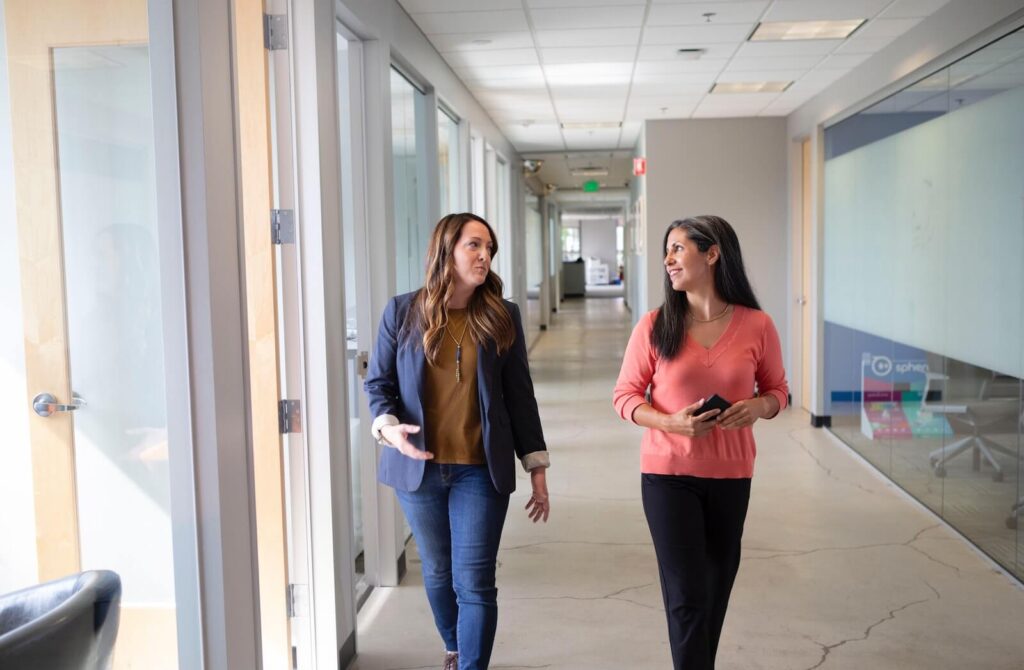
Encourage a balance between online and offline working
One effective way to encourage employees to get off the screen and out the seat is to facilitate more offline work to break up the hours of online work. This includes things like analogue collaboration sessions with write-on walls and good old-fashioned pen and paper, as well as walking meetings and more outdoor work sessions if this is something your space (and the weather) permits.
When designing work settings, we always recommend creating spaces that support a diverse range of creativity and working styles, to ensure that the wider ecosystem is as inclusive as possible. As well as a range of tech-integrated spaces, we also advise that businesses provide areas for non-digital collaboration where employees can disconnect from their devices if and when they prefer.
When staff aren’t tethered to technology, they can move more freely around the space, therefore encouraging more physical movement during the working day. Touchdown and transition spaces are also a great way to get staff moving around the workspace more dynamically.
Learn more: Facilitating digital and analogue creativity in the workplace >>
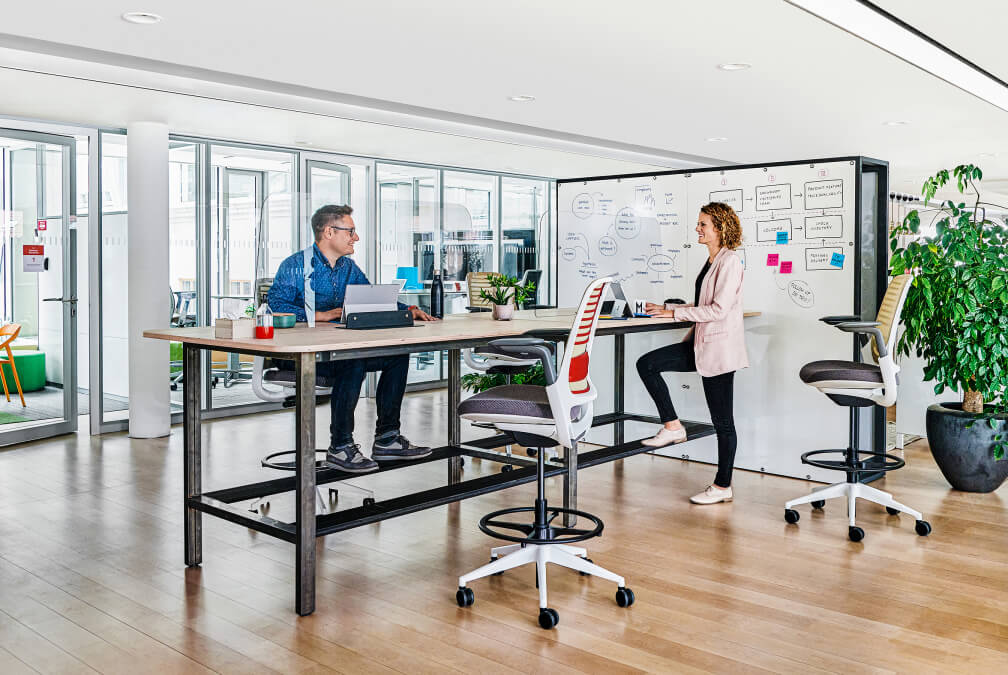
Include height-adjustable desks in your office furniture design scheme
In terms of your office furniture portfolio, we would recommend including some height-adjustable desks, sometimes referred to as sit-stand desks. This encourages staff to stand up from their seated position more often when working at the desk, which promotes better circulation and improved posture.
Not only does standing up to work improve blood flow, posture and musculoskeletal wellbeing, it also promotes better cognitive function, which means staff will be more engaged and productive. So, if incorporating height-adjustable desks into your workspace is something you’d be keen to do, speak to an office design expert who will be able to advise on how to do this most efficiently in terms of your space and budget.
Support a hybrid working model
Hybrid and remote working is something more and more businesses have been embracing since the Covid pandemic. Employers have recognised the many benefits of allowing staff to work remotely for part of the time, while maintaining traditional on-site office working for the rest of the time.
One of the advantages that comes of a flexible and hybrid working model is that employees have more time and more freedom to be more active during the day. When they’re not having to commute every day, there is more time before and after work to dedicate to physical activity. This will inevitably foster a happier, healthier workforce who are more engaged, motivated and productive at work.
Read more: Agile, hybrid, blended, flexible: what’s the difference? >>
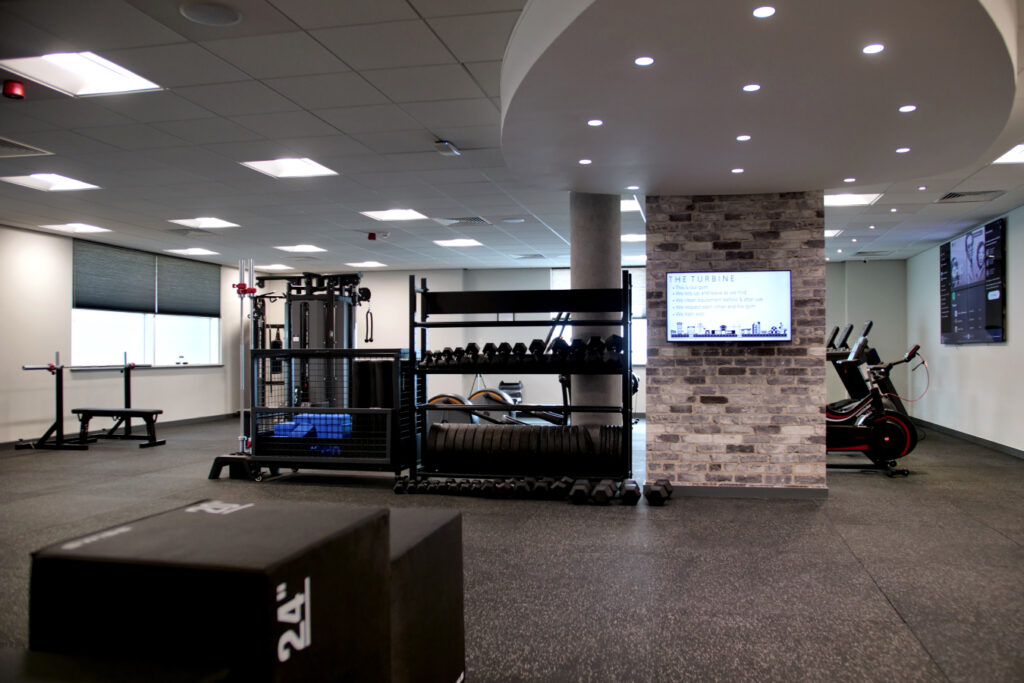
Incorporate an office gym into your workspace
A great way to encourage employees to get more movement in during the day is to provide a space for them to do so: an on-site office gym. This doesn’t have to be a fully-equipped gym kitted out with expensive machines that have a large footprint—although it certainly can be if you have the space and budget. It can simply be a small studio space where staff can do yoga, pilates or circuit workouts, for example.
Of course, this won’t be a viable option for all businesses as it might not suit the space available or the budget requirements of a project. However, it is worth pointing out here that one of the many benefits of working with an office fit out partner is that they will be able to incorporate facilities and design features in a more cost-efficient and space-savvy way.
In 2022, we completed a workspace transformation project for Ombudsman Services as their chosen furniture and fit out partner. The 40,000+ sq. ft. space included a bespoke office gym room, designed to support employee health and an improved work-life balance. The space was purpose-built and consciously designed for flexible, multi-functional use; the office gym room can be quickly and easily reconfigured for internal events or external hosting.
This is a great example of how you can incorporate facilities to encourage more physical activity and less sedentary lifestyles without having to impact your available space too much, particularly if you have a small office or are looking to downsize in the future.
View the full Ombudsman Services case study >>
Encourage physical activity as part of your employee perks
If you offer staff perks—more formally known as employee benefits—include something that supports more physical activity during the day, inside and outside of working hours. This could be a cycle-to-work scheme, a discount off a gym membership or organised office yoga classes.
These perks might not be directly related to the workplace itself or how staff behave during the working day but it contributes to the wider company culture. If employees are being supported and encouraged by their employer to move more, this mentality starts to form healthy habits and healthier lifestyles.
Showing this consideration for employees’ wellness and offering these types of benefits is an effective way to attract and retain the new generation of talent who are significantly more health-conscious than their predecessors.
In the modern working world, it’s critically important to not only invest in the professional development of staff but also in their physical health and mental wellbeing too.


